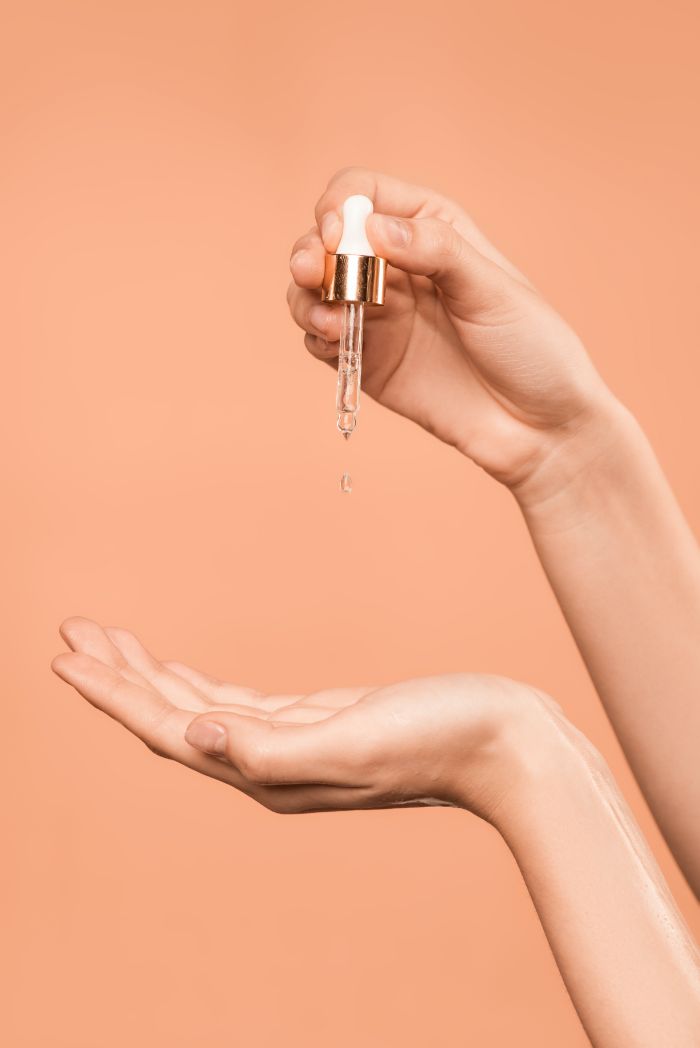Blog
Welcome to FaceForward
Get the scoop on all things beauty, wellness, and skincare.

Even if you’re just starting to sort out your skincare routine, you’ve probably heard of azelaic acid and salicylic acid.
These two ingredients are popular within the beauty industry because of the many benefits they have for the skin, including fighting acne and reducing common signs of aging.
However, their similarities often make it difficult to know which is right for your skin.
In this article, we’ll outline the key differences between these two ingredients to help you understand how to use azelaic acid versus salicylic acid and how to choose the best option for your skin’s needs.
|
Summary
|
Azelaic acid is a dicarboxylic acid found in grains like wheat and barley. When it is used in skincare, azelaic acid is generally created synthetically.
Azelaic acid can be an effective treatment for a number of skin concerns, including acne, hyperpigmentation, and rosacea. Azelaic acid may also be effective in killing and removing harmful bacteria that can infect acne and make breakouts more severe. It does this by neutralizing the organisms to prevent acne-causing bacteria from growing.
Azelaic acid has a number of great benefits for the skin including exfoliation and promoting the production of new cells. We’ll take a closer look at these in the next section.
|
Why Is Synthetic Azelaic Acid More Stable? When synthetic or topical azelaic acid is created in a lab, it goes through a process called ozonolysis. During this process, the unstable atoms found in naturally-occurring azelaic acid molecules are split through a chemical reaction. This reaction causes the previously unstable atoms to turn into substances that are less potent than when found naturally. It also means that they are less likely to react to environmental stressors, making them more stable. |

Azelaic acid is a versatile skincare ingredient that can treat a number of skin concerns.
In its synthetic form, azelaic acid can promote the skin’s cell turnover process. During this process, the skin generates new cells and pushes dead ones and impurities to the surface of the skin and pores.
Not only is this process helpful for achieving clear skin and preventing pimples, but it’s also impactful in maintaining a youthful complexion by healing blemishes and even smoothing wrinkles. When new skin cells replace dead ones, they can repair external damage that causes signs of aging—like fine lines and wrinkles—to become more noticeable.
Azelaic acid also has gentle exfoliating properties. Exfoliating helps keep the skin free from oil, dirt, and bacteria buildup that clogs pores and causes acne. It also has soothing properties, which can be useful for treating inflammatory skin conditions, like acne.
Research has shown that azelaic acid is effective for hyperpigmentation, a condition that causes dark spots to develop on the complexion.
Dark spots usually form when tyrosinase molecules become hyperactive, producing too much pigment and sometimes affecting the skin texture. These cells can become overactive because of excess sun exposure or in response to other external factors.
Azelaic acid can help to prevent this overreaction by keeping tyrosinase stable and preventing it from producing excess pigment.
Azelaic acid is generally considered one of the most tolerable skincare ingredients used by dermatologists. Even though it’s an exfoliant, it’s more gentle than other substances and has some anti-inflammatory properties.
This may help minimize the risk of adverse reactions like skin irritation and redness.
If you’re using azelaic acid for the first time, it’s common to experience mild side effects like:
Itchiness
Tingling or stinging sensations
Dryness
Peeling
These reactions are usually mild and tend to resolve over time as your skin adjusts to the product.
Severe adverse reactions are rare but can occur if you’re using an azelaic acid concentration that’s too high for your skin type.
To avoid this, it’s always recommended that you work with a dermatologist before you start using azelaic acid.
They are usually able to tell you which products and concentrations to use to avoid negative reactions.
Salicylic acid is a chemical exfoliant that was originally derived from willow bark and forms part of the beta-hydroxy acids (BHA) family.
As a skincare ingredient, salicylic acid is intended to exfoliate and remove impurities and oil from the skin surface. It does this by dissolving oil, dead skin cells, and dirt and flushing them from pores to help keep the skin clear. This also makes it a good option for people with oily skin who are more prone to developing breakouts.
Salicylic acid also has antibacterial properties that may help prevent harmful organisms from infecting pores.
Salicylic acid has a number of benefits that can help you achieve more clear skin.
As the skin produces its natural oil, called sebum, this oil combines with other dirt and can clog pores and blemishes to develop.
Salicylic acid dissolves substances like sebum to remove excess oil from the surface of the skin. Over time, this reduces pore blockage and can prevent future breakouts — especially for acne-prone skin — while helping to heal existing pimples.
When blemishes or pores become infected, they can develop into severe cases of acne — also known as cystic or nodular acne. These breakouts usually result in large, painful bumps beneath the surface of the skin that are often difficult to treat.
Salicylic acid has antibacterial properties that help it prevent acne-causing organisms from growing and multiplying. When bacterial growth is inhibited, pores and blemishes are less likely to become infected.
Salicylic acid’s antibacterial properties also help to prevent unnecessary inflammatory reactions deeper in the skin. Continuous inflammation can break down fibers that help maintain the skin’s structure, causing it to sag. This may also make fine lines and wrinkles more noticeable.
When these responses are controlled, the risk of premature aging is minimized.
Salicylic acid is a potent exfoliant that is often too harsh for sensitive skin types, especially when using it for the first time.
Common adverse effects of salicylic acid may include:
Dryness or peeling
Itchiness
Redness and swelling
A burning sensation on the skin
These reactions usually go away once the skin gets used to the salicylic acid concentration. If these effects persist or worsen, contact your dermatologist as soon as possible.
Persistent adverse reactions to salicylic acid may be a sign that the concentration is too high and doing more harm than good.
Although both are exfoliating ingredients with similar benefits for the complexion, azelaic acid and salicylic acid treat skin conditions differently.
Azelaic acid is a gentle exfoliant that can kill and inhibit the growth of some harmful bacteria directly, preventing it from infecting pores in the first place.
Salicylic acid is a more powerful exfoliant that reduces excess oil and impurities to prevent buildups that can clog pores. Bacteria tend to thrive in clogged pores and are a key source of pimples.
Azelaic acid is a much gentler exfoliant compared to salicylic acid and it may be a more suitable option for people with sensitive skin.
Azelaic acid and salicylic acid may be combined to create a targeted and effective method for treating inflammatory acne. Both azelaic acid and salicylic acid have similar benefits for the skin, and using them at the same time may enhance these effects.
While salicylic acid can be used to deeply cleanse the skin and remove impurities, it can be harsh on sensitive skin.
Both salicylic acid and azelaic acid have a number of great benefits and can be used for treating acne and many different skin concerns.
The ingredient you choose will largely depend on your skincare goals and what you need from your products.
For example, if you’re looking for a treatment for moderate acne breakouts, salicylic acid may be the best option.
On the other hand, azelaic acid might be the best choice if you have sensitive skin that doesn’t respond well to harsh ingredients like benzoyl peroxide.
The most foolproof way to know which ingredient is right for you is by speaking to a licensed dermatologist. They'll be able to give you the best advice for your skin’s needs.
Our range of prescription and over-the-counter treatments are formulated with tried-and-true ingredients like azelaic acid, retinoids, niacinamide, and more.
The best part? No in-office visits are required to access these unique formulas, if appropriate.
Learn more and start your online dermatology visit with a fast, convenient conversation through Nava MD.
This article is intended for informational purposes only and should not be considered medical advice.
Consult a healthcare professional or call a doctor in the case of a medical emergency